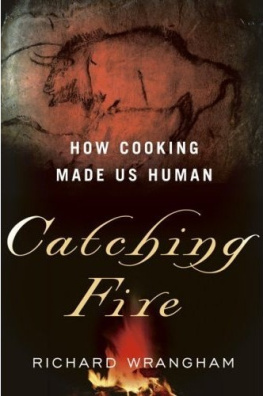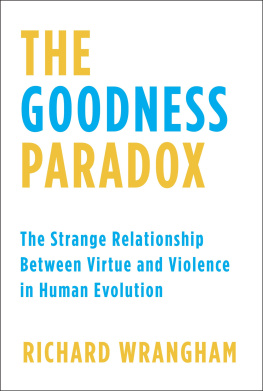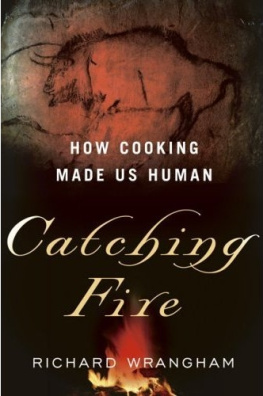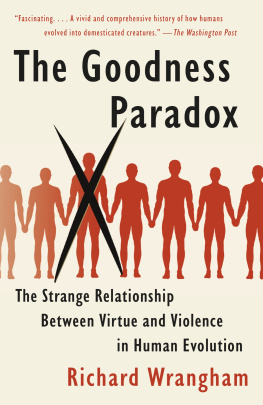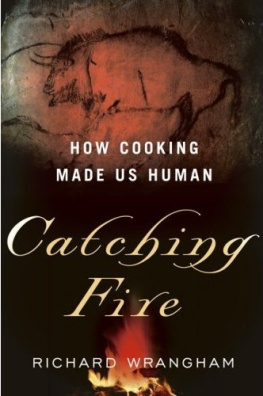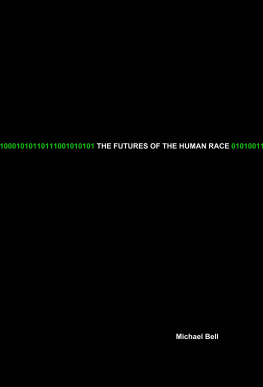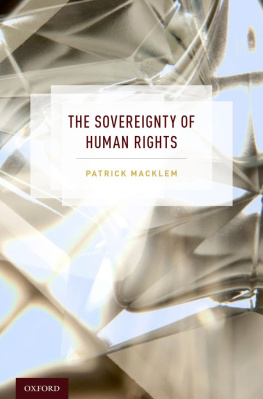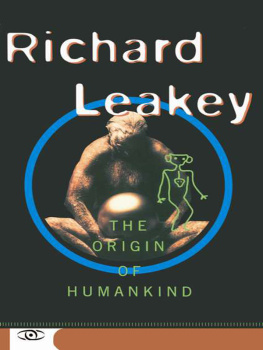Table of Contents

INTRODUCTION
The Cooking Hypothesis
[Fire] provides us warmth on cold nights; it is the means by which they prepare their food, for they eat nothing raw save a few fruits... the Andamanese believe it is the possession of fire that makes human beings what they are and distinguishes them from animals.
A. R. RADCLIFFE-BROWN, The Andaman Islanders: A Study in Social Anthropology
T he question is old: Where do we come from? The ancient Greeks told of human shapes being molded by gods out of clay. We know now that our bodies were molded by natural selection and that we come from Africa. In the distant past, long before people first wrote or tilled the soil or took to boats, our ancestors lived there as hunters and gatherers. Fossilized bones reveal our kinship with ancient Africans a million years ago and more, people who looked much like we do today. But in deeper rocks the record of our humanity dwindles until around two million years ago, when it gives way to prehuman ancestors and leaves us with a question that every culture answers in a different way, but only science can truly decide. What made us human?
This book proposes a new answer. I believe the transformative moment that gave rise to the genus Homo, one of the great transitions in the history of life, stemmed from the control of fire and the advent of cooked meals. Cooking increased the value of our food. It changed our bodies, our brains, our use of time, and our social lives. It made us into consumers of external energy and thereby created an organism with a new relationship to nature, dependent on fuel.
The fossil record shows that before our ancestors came to look like us, they were humanlike in walking upright, but mostly they had the characteristics of nonhuman apes. We call them australopithecines. Australopithecines were the size of chimpanzees, they climbed well, they had ape-sized bellies, and they had protruding, apelike muzzles. Their brains, too, were barely larger than those of chimpanzees, which suggests that they would have been as uninterested in the reasons for their existence as the antelopes and predators with which they shared their woodlands. If they still lived today in some remote area of Africa, we would find them fascinating. But to judge from their ape-sized brains, we would observe them in national parks and keep them in zoos, rather than give them legal rights or invite them to dinner.
Although the australopithecines were far different from us, in the big scheme of things they lived not so long ago. Imagine going to a sporting event with sixty thousand seats around the stadium. You arrive early with your grandmother, and the two of you take the first seats. Next to your grandmother sits her grandmother, your great-great-grandmother. Next to her is your great-great-great-great-grandmother. The stadium fills with the ghosts of preceding grandmothers. An hour later the seat next to you is occupied by the last to sit down, the ancestor of you all. She nudges your elbow, and you turn to find a strange nonhuman face. Beneath a low forehead and big brow-ridge, bright dark eyes surmount a massive jaw. Her long, muscular arms and short legs intimate her gymnastic climbing ability. She is your ancestor and an australopithecine, hardly a companion your grandmother can be expected to enjoy. She grabs an overhead beam and swings away over the crowd to steal some peanuts from a vendor.
She is connected to you by over three million years of rain and sun and searching for food in the rich and scary African bush. Most australopithecines eventually went extinct but her lineage slowly changed. Evolutionarily, she was one of the lucky ones.
The transition is first signaled at 2.6 million years ago by sharp flakes dug from Ethiopian rock. The fragments testify to cobblestones being deliberately clashed to produce a tool. Cut marks on fossil bones show that the simple knives were used to cut tongues out of dead antelope and to get hunks of meat by slicing through tendons on animal limbs. This new behavior was remarkably effectiveit would have allowed them to skin an elephant quicklyand was far more skillful than anything chimpanzees do when eating meat. Knife-making suggests planning, patience, cooperation, and organized behavior.
Old bones continue the story. By around 2.3 million years ago, the first tentative record emerges of a new species, a habiline. Habilines, still poorly understood, are the missing link between apes and humans. They were truly missing until 1960, when Jonathan Leakey, the twenty-year-old son of paleontologist Louis Leakey and archaeologist Mary Leakey, discovered them in the form of a jaw, skull, and hand in Tanzanias Olduvai Gorge. Even now there are only six skulls that tell us the brain size of the principal species, and just two reasonably complete specimens showing their limbs, so our portraits of these intermediate beings are fuzzy. Habilines appear to have been about the same small size as australopithecines and had long arms and jutting faces, leading some people to call them apes. Yet they are thought to be the knife makers, and they had brains twice as big as those of living nonhuman apes, so others place them in the genus Homo and thereby call them human. In short, they show a mixture of prehuman and human characteristics. They were like upright chimpanzees with big brains, and we might guess they were just as hairy and almost as good at climbing trees.
After the habilines emerged, it took hundreds of thousands of years for the evolutionary gears to start turning rapidly again, but between 1.9 million and 1.8 million years ago, the second critical step was taken: some habilines evolved into Homo erectus, and with their arrival the world faced a new future.
The mental abilities of Homo erectus are open to question. We do not know whether they used a primitive kind of language, or how well they controlled their tempers. But Homo erectus looked much more like us than any prior species. They are considered to have walked and run as fluently as we do today, with the same characteristic stride that we have. Their various descendants, including Neanderthals more than a million years later, all exhibited the same form and stature. If they time-traveled to a modern city, they might suffer some sidelong glances but they could be fitted for clothes in a typical store. Their anatomy was so similar to ours that some anthropologists call them Homo sapiens , but most give these pioneers their own distinct name of Homo erectus because of such features as smaller brains and lower foreheads than are found in modern humans. Whatever we call them, their arrival marks the genesis of our physical form. They even appear to have grown and matured slowly, in the manner of modern humans. After their emergence it would be mainly a question of time and brain growth before modern humans emerged about two hundred thousand years ago.
So the question of our origins concerns the forces that sprung Homo erectus from their australopithecine past. Anthropologists have an answer. According to the most popular view since the 1950s there was a single supposed impetus: the eating of meat.
Hundreds of different hunter-gatherer cultures have been described, and all obtained a substantial proportion of their diet from meat, often half their calories or more. Archaeology indicates a similar importance of meat all the way back to the butchering habilines more than two million years ago. By contrast, there is little to suggest that their predecessors, the australopithecines, were much different from chimpanzees in their predatory behavior. Chimpanzees readily grab monkeys, piglets, or small antelopes when opportunities arise, but weeks or even months can go by with no meat in their diets. Among primates we are the only dedicated carnivores, and the only ones to take meat from large carcasses.
Next page
